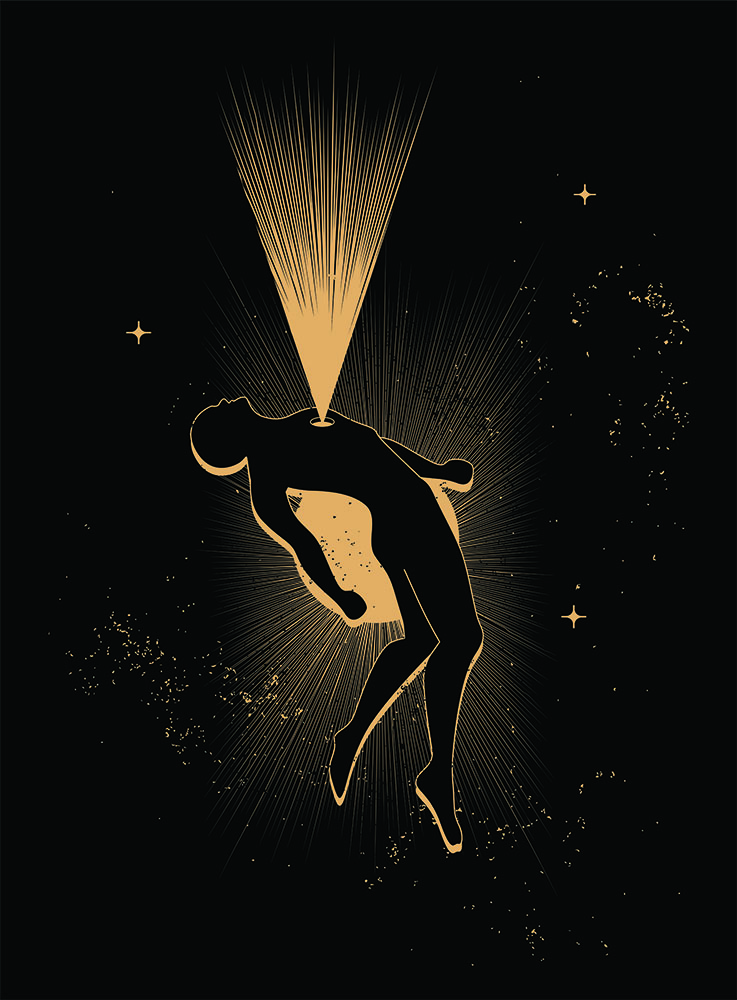
Martin Goodson
Under the Bodhi Tree
Exercises in Mindfulness
How do we find the place inside ourselves which allows us to transcend suffering? The answer is much more straight forward than you may imagine.
 ©
© shutterstock
This body is the Bodhi Tree
The Heart a bright mirror on a stand
Each day wipe the mirror clean
So that no dust may alight.
This verse is one of a pair that feature in the story of Eno Daikan (Ch. Hui Neng), the Sixth Chinese Patriarch.
If we know the story, then we also know that this verse was written by the head monk, who failed in his attempt for the transmission of the succession. It was Eno’s verse that succeeded. As such, ‘I' can make the mistake that the above verse is incorrect - but this would be an error.
The fifth patriarch, Gunin, saw immediately that his head monk had not yet seen into what is called in Zen the ‘Great Matter’; however, he made it quite clear that if his monks put what this verse says into practice then they would indeed attain Enlightenment.
So, Gunin asks us to look more closely…
What we find is our whole daily life practice written into these four brief lines.
The Bodhi Tree is the tree under which the Buddha-to-be sat after he had been rejected by the five ascetics. He made a comfortable seat, having given up both the life of luxury and the life of self-mortification. Here he entered into a deep samadhi; he was tempted by Mara three times but Mara could not prevail against the great being. It was here too that he looked up and saw the morning star, awakening to Buddhahood.
The place where the Great Bodhisattva sat down under the Bodhi tree is called in Zen the immovable spot. But this is not just referring to the ground under the tree rather to the heart and the body with which the Great Bodhisattva sat down.
This poem firmly places the ‘immoveable spot’, this ‘place’ under the Bodhi Tree as our very own body. It is into this place that we are to settle the wayward heart. This heart which ‘ghosts’ about in past and future and in all my fancy ideas, with all my judgements skipping about in the branches.
Instead, simply to return to this place, to find, as the Buddha stated in the Pali canon:
“In this fathom long body, O monks,
Is the world, the beginning of the world,
the end of the world
and the way that leads to the end of the world”
Here we meet Mara, who is Lord of this world of desires and of the other fires that carry me away.
Here too is where the awakening happens, not in some lofty place, at some other time, but here and now, which is where the ever-present body abides.
There are no thoughts in the body, there are no judgements and opinions in the body, it is just as it is. All the aforementioned belong to this ghost called ‘I’ who is not the real master.
The bright mirror of the heart is that subtle consciousness that simply reflects things as they really are. How to describe this heart?
It is the seeing in the eye, the hearing in the ear, the smelling in the nose, and so on, until it happens that one knows these thoughts and feelings simply as the thoughts and feelings that they are.
In zazen, it is the moment of realisation of having been carried off once again into thoughts and of being now awoken to the fact. This is the functioning of the Heart-mirror.
But it gets covered over.
When the passions flare-up; when lost in thoughts and daydreams; when preoccupied by my likes and dislikes.
“But this just now is important to me… or interesting to me… or relevant to me” Suddenly, these thoughts and opinions come in and mould the heart into their own likeness. Suddenly they become my whole world and the Heart is now obscured by them.
So, when once more these things come to obscure the radiant Heart, we have a mantra:
“Unimportant, Irrelevant, Uninteresting!”
Like Manjushri’s sword that cuts through the bonds of delusion, just jump back into this moment.
Hence, once again, to wipe them away, and once again to wipe them away. In effect it is to lay down ‘I’; and again, to lay myself down - allowing the heart to open out once more.
This is our practice.
When ‘no dust alights’, what then?
Text copyright to The Zen Gateway




